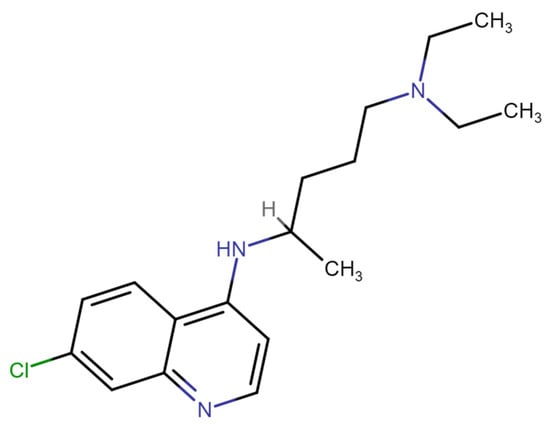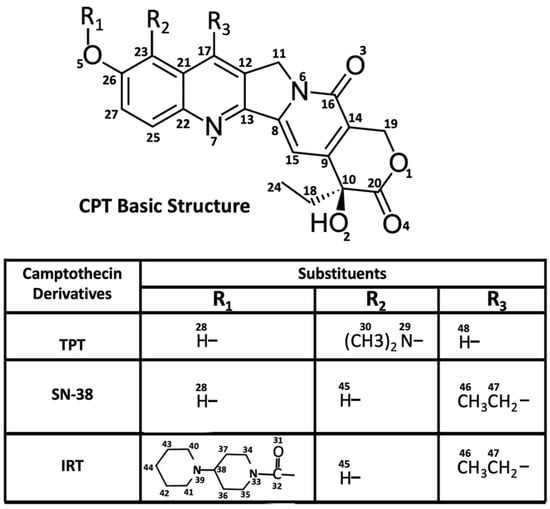Pharmaceutical Nanoimaging and Nanoengineering
Share This Topical Collection
Editor
 Prof. Dr. Yuri Lyubchenko
Prof. Dr. Yuri Lyubchenko
 Prof. Dr. Yuri Lyubchenko
Prof. Dr. Yuri Lyubchenko
E-Mail
Website
Guest Editor
Department of Pharmaceutical Sciences, College of Pharmacy, WSH, University of Nebraska Medical Center, 986025 Nebraska Medical Center, Omaha, NE 68198-6025, USA
Interests: nanomedicine; biophysics; DNA replication and recombination; protein-DNA interaction; chromatin structure and dynamics; Alzheimer's disease; Parkinson's disease; amyloid protein aggregation; protein misfolding; alpha-synuclein; beta amyloid; protein–protein interaction; computational modeling; nanoimaging; single-molecule biophysics; force spectroscopy; atomic force microscopy; AFM
Special Issues, Collections and Topics in MDPI journals
Topical Collection Information
Dear Colleagues,
This Topical Collection of IJMS invites significant contributions on imaging and probing at a nanoscale along with focused on the study, development and refinement of materials at a very small scale. Papers dealing with nanomaterials and how they can lead to novel medicinal approaches are very welcome. Topics of interest include, but are not limited to, the following:
- Nanoimaging of biomolecules including AFM, STM, optical tweezers and other single-molecule biophysics approaches.
- Structure and dynamics of biomolecular systems at the nanoscale.
- Design of nanoassemblies.
- Interaction of nanoassemblies with cells and organs.
- Nanotechnology in drug design and delivery.
- Liposomes, micells, polymer–drug conjugate and other carriers for nanomedicine.
- Antibody–drug conjugates.
Prof. Dr. Yuri Lyubchenko
Guest Editor
Manuscript Submission Information
Manuscripts should be submitted online at www.mdpi.com by registering and logging in to this website. Once you are registered, click here to go to the submission form. Manuscripts can be submitted until the deadline. All submissions that pass pre-check are peer-reviewed. Accepted papers will be published continuously in the journal (as soon as accepted) and will be listed together on the collection website. Research articles, review articles as well as short communications are invited. For planned papers, a title and short abstract (about 100 words) can be sent to the Editorial Office for announcement on this website.
Submitted manuscripts should not have been published previously, nor be under consideration for publication elsewhere (except conference proceedings papers). All manuscripts are thoroughly refereed through a single-blind peer-review process. A guide for authors and other relevant information for submission of manuscripts is available on the Instructions for Authors page. International Journal of Molecular Sciences is an international peer-reviewed open access semimonthly journal published by MDPI.
Please visit the Instructions for Authors page before submitting a manuscript.
There is an Article Processing Charge (APC) for publication in this
open access journal. For details about the APC please see here.
Submitted papers should be well formatted and use good English. Authors may use MDPI's
English editing service prior to publication or during author revisions.
Keywords
- AFM
- optical tweezers
- magnetic tweezers
- single-molecule fluorescence
- protein self-assembly
- nanomedicine
- ion channels
- drug delivery
Published Papers (4 papers)
Open AccessReview
Nanotechnology Advances in the Detection and Treatment of Lymphoid Malignancies
by
Francesco Maria Adamo, Filomena De Falco, Erica Dorillo, Daniele Sorcini, Arianna Stella, Angela Esposito, Roberta Arcaleni, Emanuela Rosati and Paolo Sportoletti
Viewed by 899
Abstract
Lymphoid malignancies are complex diseases with distinct biological behaviors, clinical presentations, and treatment responses. Ongoing research and advancements in biotechnology enhance the understanding and management of these malignancies, moving towards more personalized approaches for diagnosis and treatment. Nanotechnology has emerged as a promising
[...] Read more.
Lymphoid malignancies are complex diseases with distinct biological behaviors, clinical presentations, and treatment responses. Ongoing research and advancements in biotechnology enhance the understanding and management of these malignancies, moving towards more personalized approaches for diagnosis and treatment. Nanotechnology has emerged as a promising tool to improve some limitations of conventional diagnostics as well as treatment strategies for lymphoid malignancies. Nanoparticles (NPs) offer unique advantages such as enhanced multimodal detection, drug delivery, and targeted therapy capabilities, with the potential to improve precision medicine and patient outcomes. Here, we comprehensively examine the current landscape of nanoconstructs applied in the management of lymphoid disease. Through a comprehensive analysis of preclinical studies, we highlight the translational potential of NPs in revolutionizing the field of hematological malignancies, with a specific focus on lymphoid neoplasms.
Full article
►▼
Show Figures
Open AccessArticle
Impact of Nebulization on the Physicochemical Properties of Polymer–Lipid Hybrid Nanoparticles for Pulmonary Drug Delivery
by
Andrea Gonsalves and Jyothi U. Menon
Cited by 1 | Viewed by 1450
Abstract
Nanoparticles (NPs) have shown significant potential for pulmonary administration of therapeutics for the treatment of chronic lung diseases in a localized and sustained manner. Nebulization is a suitable method of NP delivery, particularly in patients whose ability to breathe is impaired due to
[...] Read more.
Nanoparticles (NPs) have shown significant potential for pulmonary administration of therapeutics for the treatment of chronic lung diseases in a localized and sustained manner. Nebulization is a suitable method of NP delivery, particularly in patients whose ability to breathe is impaired due to lung diseases. However, there are limited studies evaluating the physicochemical properties of NPs after they are passed through a nebulizer. High shear stress generated during nebulization could potentially affect the surface properties of NPs, resulting in the loss of encapsulated drugs and alteration in the release kinetics. Herein, we thoroughly examined the physicochemical properties as well as the therapeutic effectiveness of Infasurf lung surfactant (IFS)-coated PLGA NPs previously developed by us after passing through a commercial Aeroneb
® vibrating-mesh nebulizer. Nebulization did not alter the size, surface charge, IFS coating and bi-phasic release pattern exhibited by the NPs. However, there was a temporary reduction in the initial release of encapsulated therapeutics in the nebulized compared to non-nebulized NPs. This underscores the importance of evaluating the drug release kinetics of NPs using the inhalation method of choice to ensure suitability for the intended medical application. The cellular uptake studies demonstrated that both nebulized and non-nebulized NPs were less readily taken up by alveolar macrophages compared to lung cancer cells, confirming the IFS coating retention. Overall, nebulization did not significantly compromise the physicochemical properties as well as therapeutic efficacy of the prepared nanotherapeutics.
Full article
►▼
Show Figures
Open AccessArticle
Mechanism of DNA Intercalation by Chloroquine Provides Insights into Toxicity
by
Joha Joshi, Micah J. McCauley, Michael Morse, Michael R. Muccio, Joseph G. Kanlong, Márcio S. Rocha, Ioulia Rouzina, Karin Musier-Forsyth and Mark C. Williams
Cited by 2 | Viewed by 1448
Abstract
Chloroquine has been used as a potent antimalarial, anticancer drug, and prophylactic. While chloroquine is known to interact with DNA, the details of DNA–ligand interactions have remained unclear. Here we characterize chloroquine–double-stranded DNA binding with four complementary approaches, including optical tweezers, atomic force
[...] Read more.
Chloroquine has been used as a potent antimalarial, anticancer drug, and prophylactic. While chloroquine is known to interact with DNA, the details of DNA–ligand interactions have remained unclear. Here we characterize chloroquine–double-stranded DNA binding with four complementary approaches, including optical tweezers, atomic force microscopy, duplex DNA melting measurements, and isothermal titration calorimetry. We show that chloroquine intercalates into double stranded DNA (dsDNA) with a
KD ~ 200 µM, and this binding is entropically driven. We propose that chloroquine-induced dsDNA intercalation, which happens in the same concentration range as its observed toxic effects on cells, is responsible for the drug’s cytotoxicity.
Full article
►▼
Show Figures
Open AccessArticle
Drug-Induced Conformational Dynamics of P-Glycoprotein Underlies the Transport of Camptothecin Analogs
by
Gershon A. K. Mensah, Katherine G. Schaefer, Michael G. Bartlett, Arthur G. Roberts and Gavin M. King
Cited by 1 | Viewed by 1362
Abstract
P-glycoprotein (Pgp) plays a pivotal role in drug bioavailability and multi-drug resistance development. Understanding the protein’s activity and designing effective drugs require insight into the mechanisms underlying Pgp-mediated transport of xenobiotics. In this study, we investigated the drug-induced conformational changes in Pgp and
[...] Read more.
P-glycoprotein (Pgp) plays a pivotal role in drug bioavailability and multi-drug resistance development. Understanding the protein’s activity and designing effective drugs require insight into the mechanisms underlying Pgp-mediated transport of xenobiotics. In this study, we investigated the drug-induced conformational changes in Pgp and adopted a conformationally-gated model to elucidate the Pgp-mediated transport of camptothecin analogs (CPTs). While Pgp displays a wide range of conformations, we simplified it into three model states: ‘open-inward’, ‘open-outward’, and ‘intermediate’. Utilizing acrylamide quenching of Pgp fluorescence as a tool to examine the protein’s tertiary structure, we observed that topotecan (TPT), SN-38, and irinotecan (IRT) induced distinct conformational shifts in the protein. TPT caused a substantial shift akin to AMPPNP, suggesting ATP-independent ‘open-outward’ conformation. IRT and SN-38 had relatively moderate effects on the conformation of Pgp. Experimental atomic force microscopy (AFM) imaging supports these findings. Further, the rate of ATPase hydrolysis was correlated with ligand-induced Pgp conformational changes. We hypothesize that the separation between the nucleotide-binding domains (NBDs) creates a conformational barrier for substrate transport. Substrates that reduce the conformational barrier, like TPT, are better transported. The affinity for ATP extracted from Pgp-mediated ATP hydrolysis kinetics curves for TPT was about 2-fold and 3-fold higher than SN-38 and IRT, respectively. On the contrary, the dissociation constants (
KD) determined by fluorescence quenching for these drugs were not significantly different. Saturation transfer double difference (STDD) NMR of TPT and IRT with Pgp revealed that similar functional groups of the CPTs are accountable for Pgp-CPTs interactions. Efforts aimed at modifying these functional groups, guided by available structure-activity relationship data for CPTs and DNA-Topoisomerase-I complexes, could pave the way for the development of more potent next-generation CPTs.
Full article
►▼
Show Figures










